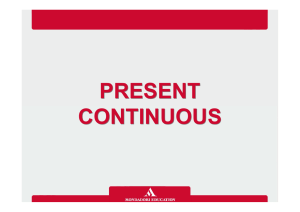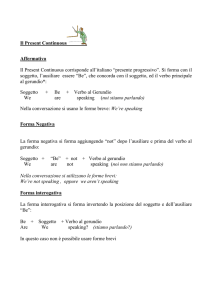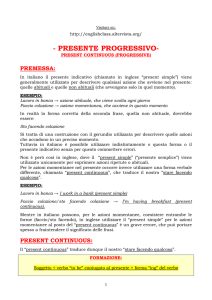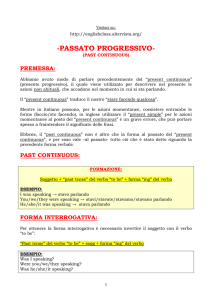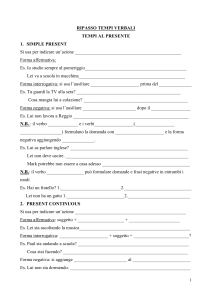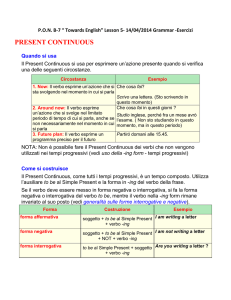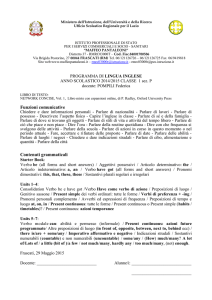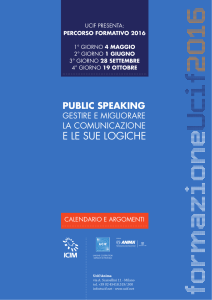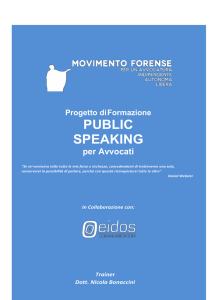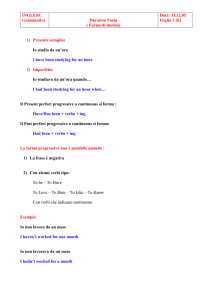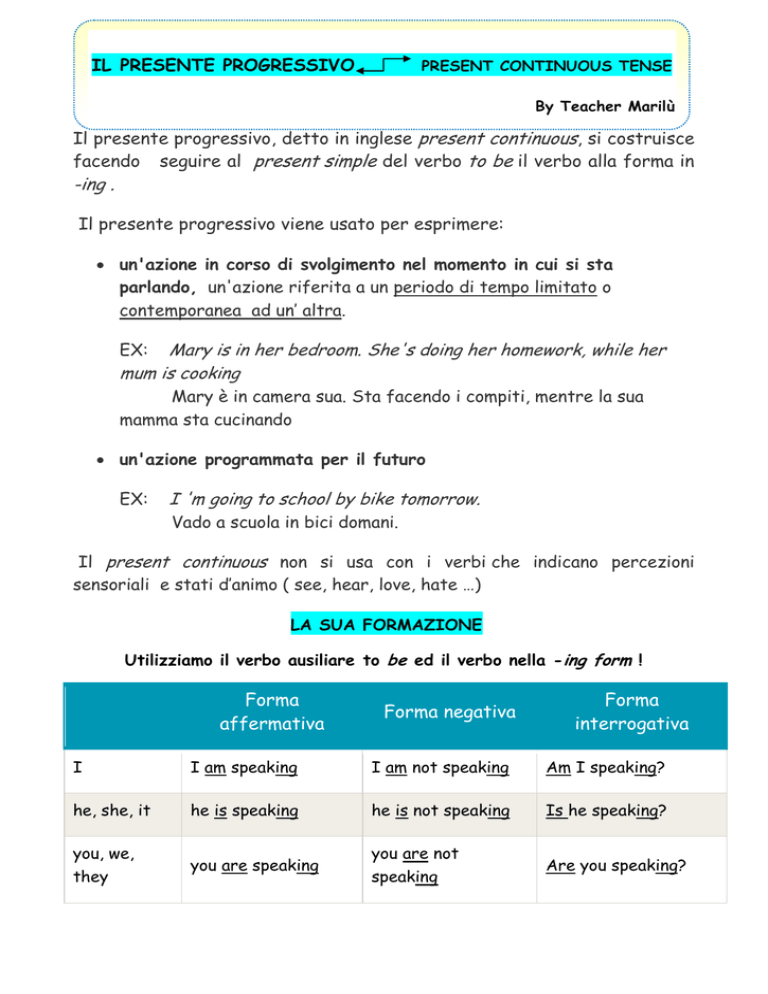
IL PRESENTE PROGRESSIVO
PRESENT CONTINUOUS TENSE
By Teacher Marilù
Il presente progressivo, detto in inglese present continuous, si costruisce
facendo seguire al present simple del verbo to be il verbo alla forma in
-ing .
Il presente progressivo viene usato per esprimere:
un'azione in corso di svolgimento nel momento in cui si sta
parlando, un'azione riferita a un periodo di tempo limitato o
contemporanea ad un’ altra.
Mary is in her bedroom. She's doing her homework, while her
mum is cooking
EX:
Mary è in camera sua. Sta facendo i compiti, mentre la sua
mamma sta cucinando
un'azione programmata per il futuro
EX:
I 'm going to school by bike tomorrow.
Vado a scuola in bici domani.
Il present continuous non si usa con i verbi che indicano percezioni
sensoriali e stati d’animo ( see, hear, love, hate …)
LA SUA FORMAZIONE
Utilizziamo il verbo ausiliare to be ed il verbo nella -ing form !
Forma
affermativa
Forma negativa
Forma
interrogativa
I
I am speaking
I am not speaking
Am I speaking?
he, she, it
he is speaking
he is not speaking
Is he speaking?
you, we,
they
you are speaking
you are not
speaking
Are you speaking?
LA FORMA CONTRATTA
Nella lingua parlata si tende a contrarre pronomi e verbi per avere un
suono più rapido. Per il PRESENT CONTINUOUS valgono le stesse regole
studiate per l’ausiliare essere.
Forma intera
Forma contratta
Esempio
am (not)
…’m (not)
I’m (not) (No: I amn’t)
are
…’re
you’re
are not
…’re not/… aren’t
we’re not/we aren’t
is
…’s
he’s
is not
…’s not/… isn’t
she’s not/she isn’t
INDICATORI DI TEMPO DEL PRESENTE PROGRESSIVO
at the moment = in questo momento
now = ora, adesso
just now, right now = proprio ora

